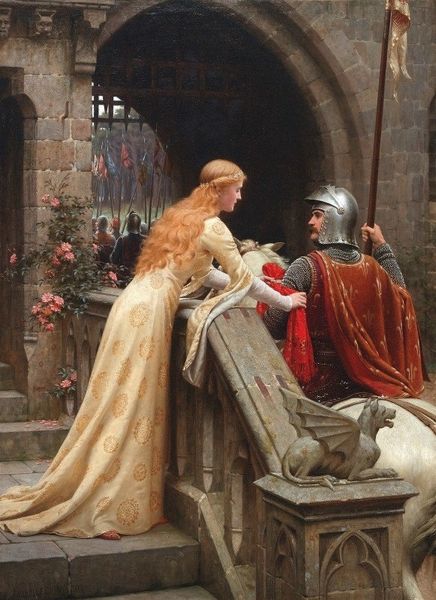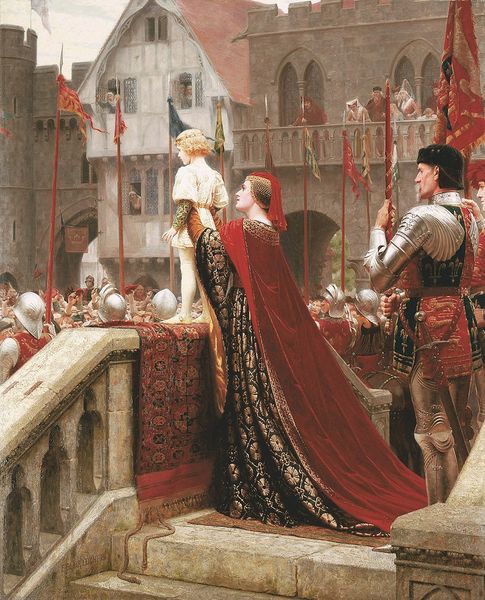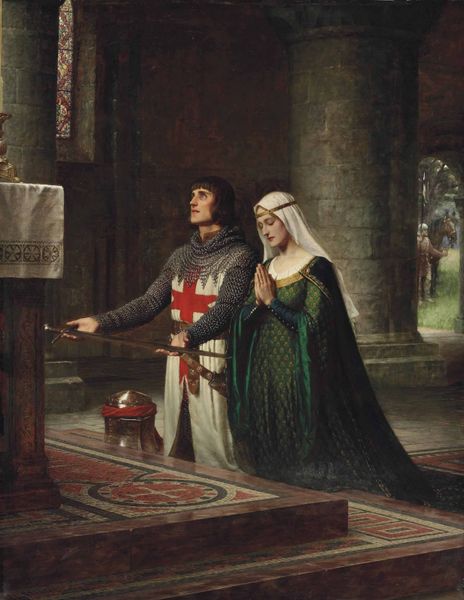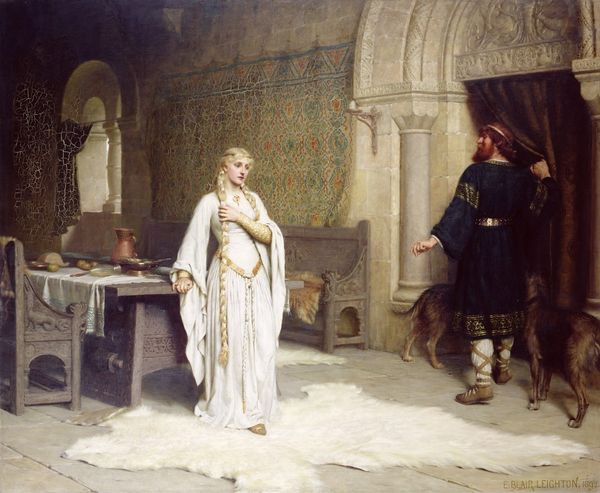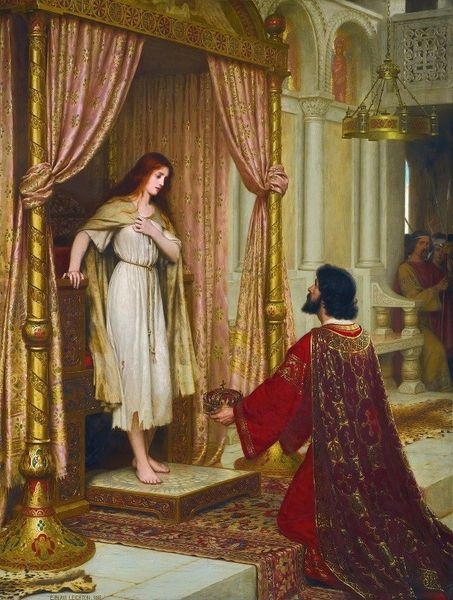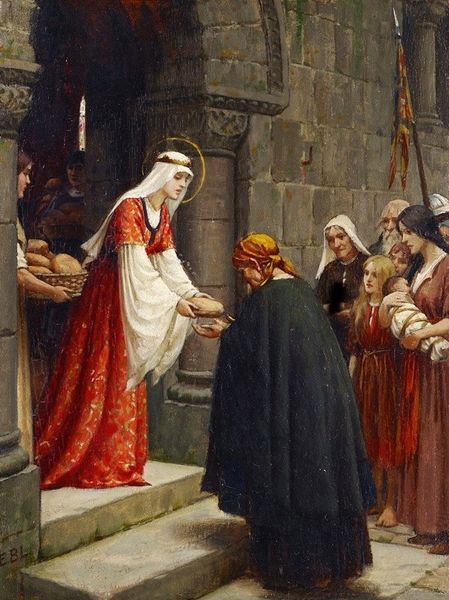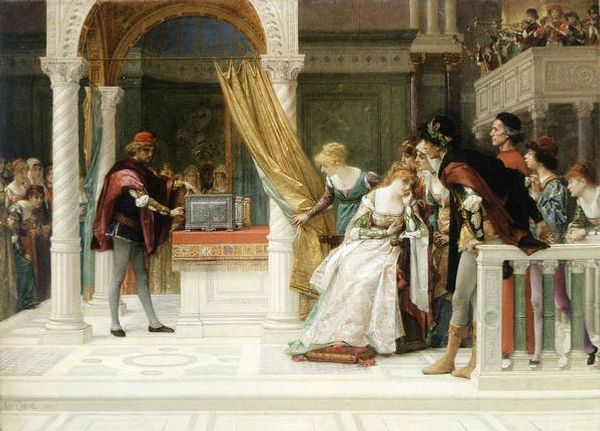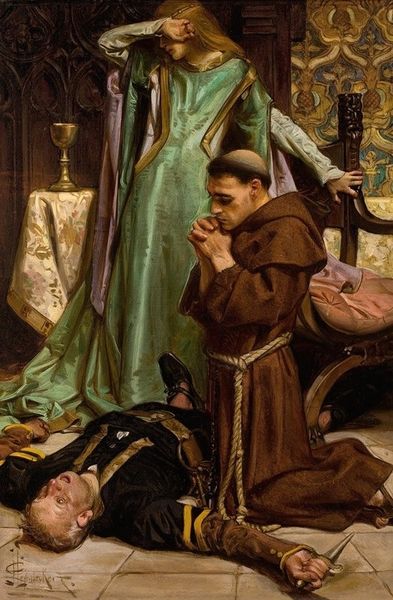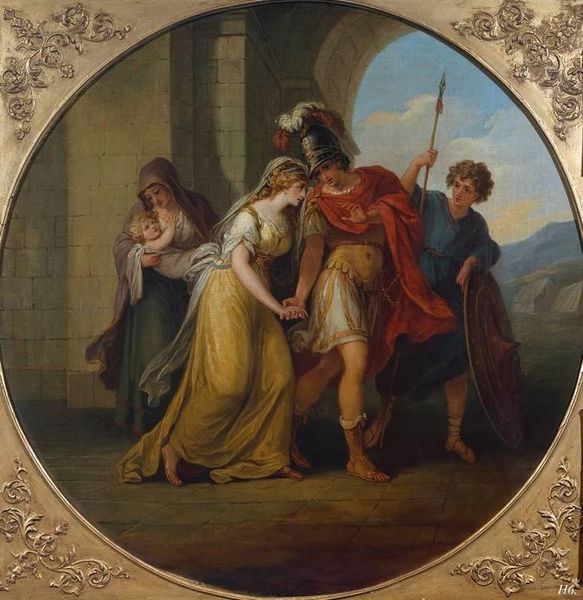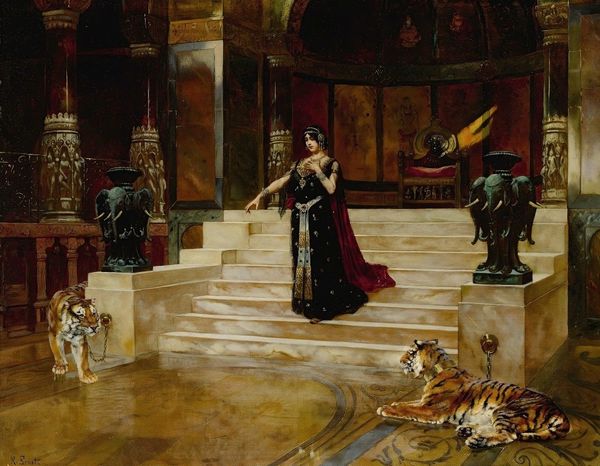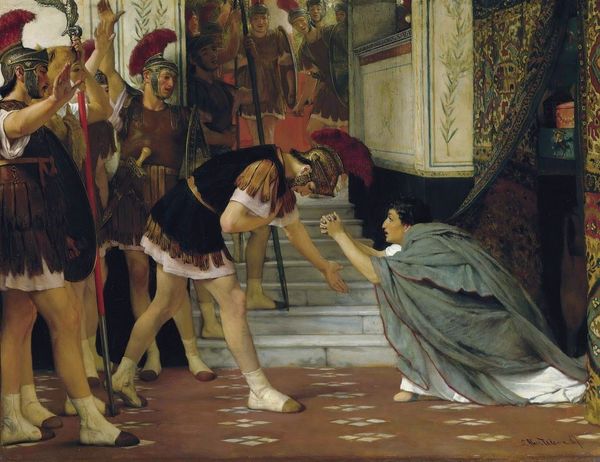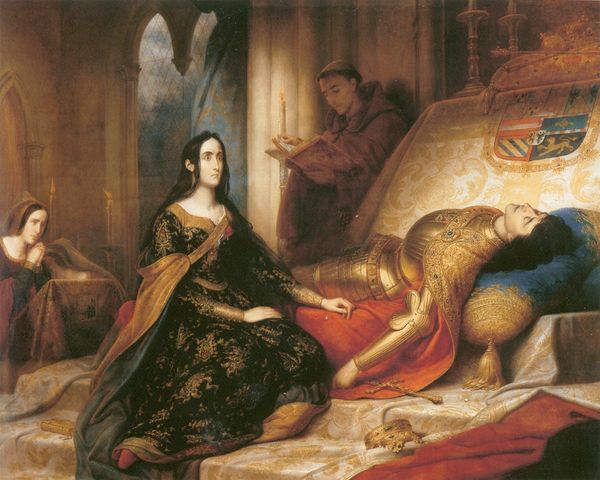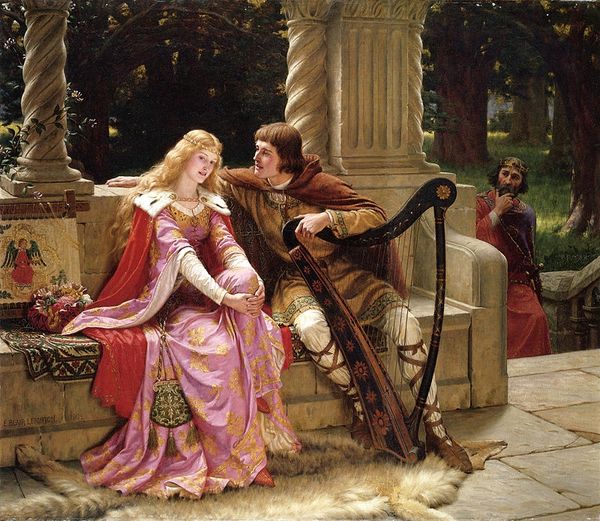
Copyright: Public domain
Curator: Edmund Blair Leighton's "Accolade," painted in 1901 with oil, stages a scene that, for me, brings into sharp focus the historical constructions of courtly love and chivalric duty. Editor: Well, it certainly feels…romantic. I’m struck immediately by how staged it all seems—almost like a tableau vivant, yet the knight on bended knee feels like an actor caught mid-scene, utterly devoted and overwhelmed, it is such a theatrical depiction of respect, duty, honor...it's very touching. Curator: The composition is, in essence, the culmination of highly industrialized artistic processes. The application of academic painting style, the costume construction… All these choices reflect Leighton’s understanding of Victorian societal expectations, particularly regarding the role of women as arbiters of honor. Editor: The light is stunning. It bathes her face, almost ethereal in quality, as she bestows this momentous honor. And all that heavy chainmail and ornate details! I imagine it felt important, perhaps a bit stuffy in person, or… in this case in paint. Curator: The materials tell their own story, don’t they? Consider the sourcing of the pigments, the canvas preparation, the artist's labour, even the display frame–each aspect ties back into the economic systems supporting artists like Leighton in that period. Were those chainmails individually manufactured? Was she dressed specifically for that moment or were those typical outfits that everyone used? And where were they produced? These kinds of questions tell us the history of the artwork more accurately, as far as I’m concerned, than feelings do. Editor: Maybe… but even knowing the artist used oil paint to manufacture the picture doesn't alter how tender and intimate the exchange looks between them. There’s a tension in the formality, in the staging; the red backdrop emphasizes a potent blend of ceremony, but at its heart, is a moment of undeniable humanity. Curator: I'm more drawn to how Leighton leverages the pre-Raphaelite aesthetics to bolster the image of an idealised past, masking potentially oppressive social realities. I suppose looking into the ways history painting and narratives function can be useful after all. Editor: Seeing it all together like this– the weight of honor, duty, and affection –it's a fascinating window. "Accolade," it’s really something isn’t it? I imagine, even in the production process of all these historical re-imaginings there could have been genuine moments.
Comments
No comments
Be the first to comment and join the conversation on the ultimate creative platform.
